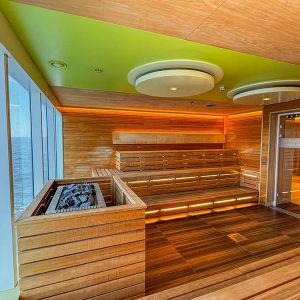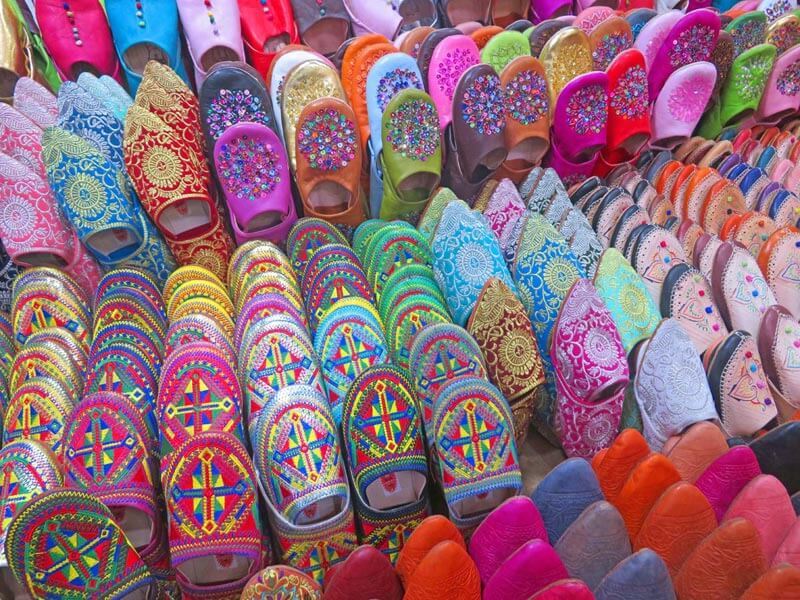
True to centuries old traditions, Moroccan craftsmen love to create beautiful things, including myriad practical items to enhance daily life in local homes. Wood, clay, copper and brass, leather or wool, anything can inspire a work of art, carefully handcrafted after years of training. Right across the country, medinas dazzle you with superb artefacts but with its rich cultural heritage, Fez has earned a place among the world’s greatest producers.
Thousands of artisans still work in the medieval district, a head-spinning maze of colours, sounds and smells. Every craft is available here but as you wander around dark alleyways and dead ends, ceramics often draw your gaze, from fine mosaics draping gates and public fountains to vases, mugs and jugs, bowls and plates, or tagines for slow-cooking, jostling for space along the gleaming stalls. Blue and white are traditional, though other colours abound, and visitors can watch the whole process, shaping clay on the potter’s wheel, chipping mosaic tiles, painting floral or geometric patterns or entwining silver thread. Designs are influenced by Islamic art, with touches of Moorish Andalusia and Berber culture. The other top producers are imperial Meknes and Safi on the Atlantic coast.
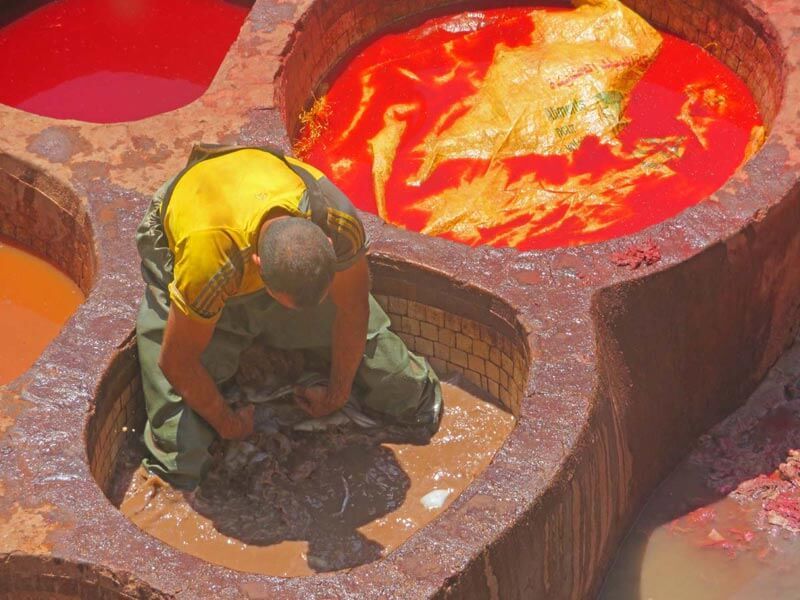 But Fez is unrivalled for quality leather. “Best views from the terrace, madame, but please take a sprig of mint, it helps with the smell.” So, there we were, looking down on the Chaouwara Tanneries, one of the city’s iconic attractions where the process has barely changed since the Middle-Ages. Far below, knee deep in stone vats, men pounded and swirled the clean softened skins dipped in organic dyes, blue indigo, red poppy, yellow saffron, mint green, brown cedar, orange henna. Camel skins are the best, sheep the cheapest while in between are the flame and waterproof goat’s skins. The tanneries store and medina souks are packed with jackets, bags, belts, shoes, pointed babouches, pouffes and cushions. Few visitors leave empty-handed.
But Fez is unrivalled for quality leather. “Best views from the terrace, madame, but please take a sprig of mint, it helps with the smell.” So, there we were, looking down on the Chaouwara Tanneries, one of the city’s iconic attractions where the process has barely changed since the Middle-Ages. Far below, knee deep in stone vats, men pounded and swirled the clean softened skins dipped in organic dyes, blue indigo, red poppy, yellow saffron, mint green, brown cedar, orange henna. Camel skins are the best, sheep the cheapest while in between are the flame and waterproof goat’s skins. The tanneries store and medina souks are packed with jackets, bags, belts, shoes, pointed babouches, pouffes and cushions. Few visitors leave empty-handed.
As in any Moroccan city, Fez has an overwhelming choice of carpets, elaborate Oriental wonders, local rugs in vivid colours or Berber spreads, often orange and red, wonderfully displayed in front of you as you are invited to relax with a glass of mint tea. How can you resist? Not easy but if you are travelling on the Grand Tour, you could just find your favourite piece in the Atlas Mountains where women weave at home and sell their work in a local cooperative. But bear in mind there are over 40 tribes in Morocco, each one claiming its own motifs and style, so most experts can identify the origin of a carpet and sometimes even the family who produced it.
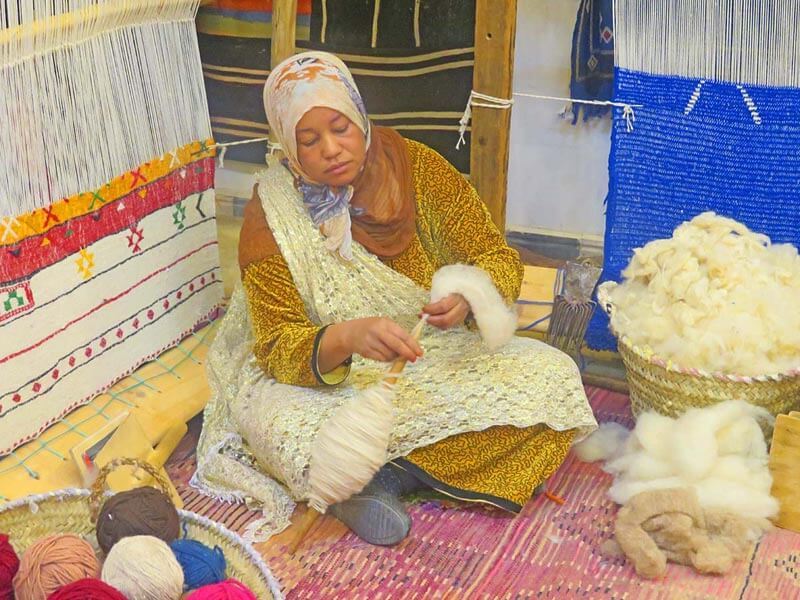 Around 1500 BC when Berbers brought their weaving skills to the country, textiles began to grow. Even today weaving and embroidery are said to have magical powers and carpets aside, this also applies to furnishing and clothing. Covers and mats, blankets, shawls, bridal wear or ankle-length flowing garments, all express the weaver’s identity while giving blessings to the family and community. Materials vary but I loved the shimmering ‘silk’ scarves made from agave filaments.
Around 1500 BC when Berbers brought their weaving skills to the country, textiles began to grow. Even today weaving and embroidery are said to have magical powers and carpets aside, this also applies to furnishing and clothing. Covers and mats, blankets, shawls, bridal wear or ankle-length flowing garments, all express the weaver’s identity while giving blessings to the family and community. Materials vary but I loved the shimmering ‘silk’ scarves made from agave filaments.
Jewellery plays a similar role and although gold is available, silver comes top from antique daggers to ceremonial teapots or ladies’ ornaments where semi-precious stones add plenty of colour. Delicate filigree rings glitter alongside heavy bracelets and pendants and the chunky brooch clasps which reveal a woman’s status, engaged, married or free as the wind. A great place to buy silver is Tiznit south of Agadir.
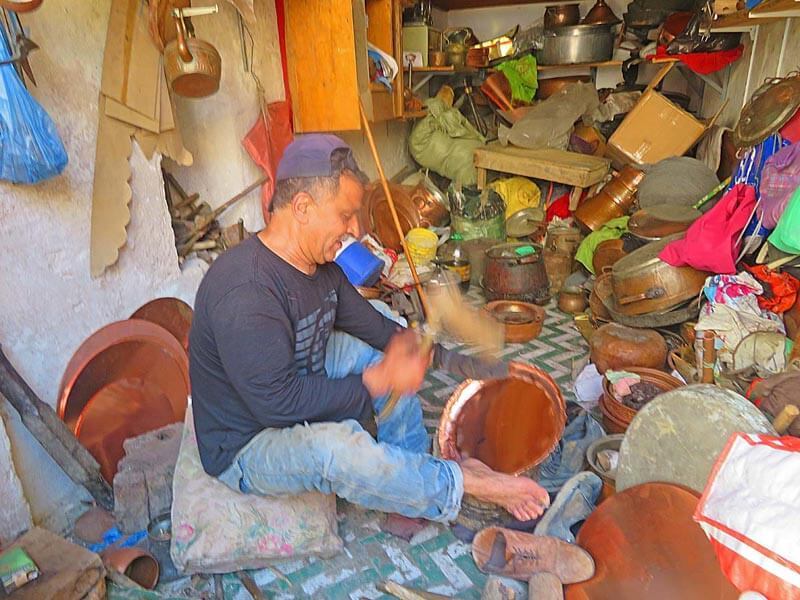 All metalwork is stunning from wrought iron for window grills and balustrades to glowing copper and brass shaped into lanterns, mirror frames, chandeliers, screens and more. The tapping of hammers echoes in every medina where finished items can be engraved with calligraphy or inlaid with contrasting metal. Stone and wood carving are also sought after, soft white stone in Taroudant or fossilized marble in Erfoud, cedar wood around Tetouan and fragrant thuya in Essaouira on the Atlantic coast. This pleasant resort has been renowned for marquetry since Antiquity and in the old munition stores beneath the ramparts, lonely artisans chisel away in cubby holes among polished coffee tables, salad bowls, spoons and trays decorated with pale strips of citron wood.
All metalwork is stunning from wrought iron for window grills and balustrades to glowing copper and brass shaped into lanterns, mirror frames, chandeliers, screens and more. The tapping of hammers echoes in every medina where finished items can be engraved with calligraphy or inlaid with contrasting metal. Stone and wood carving are also sought after, soft white stone in Taroudant or fossilized marble in Erfoud, cedar wood around Tetouan and fragrant thuya in Essaouira on the Atlantic coast. This pleasant resort has been renowned for marquetry since Antiquity and in the old munition stores beneath the ramparts, lonely artisans chisel away in cubby holes among polished coffee tables, salad bowls, spoons and trays decorated with pale strips of citron wood.
True, you will find cheap imports and machine-made items in many towns but nothing beats the real thing which continues to flourish from one generation to the next.
More information
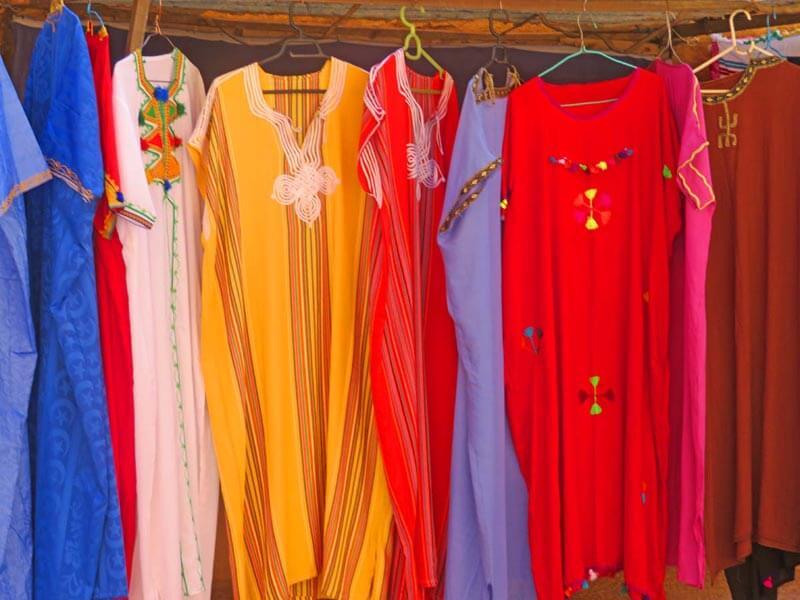 Solange Hando travelled on the Grand Tour of Morocco with Jules Verne.
Solange Hando travelled on the Grand Tour of Morocco with Jules Verne.
The local currency is the dirham, only available in the country. Change what you need for small purchases, euros and credit cards are widely accepted in tourist places.
Bargaining is fine but that shows you are interested and if you start, you will be expected to buy.
The price says it all so if you want quality, ignore cheap items. For carpets, sterling silver or your mini garden fountain, take the advice of a trustworthy guide.
Silver Travel Advisor recommends Jules Verne.

